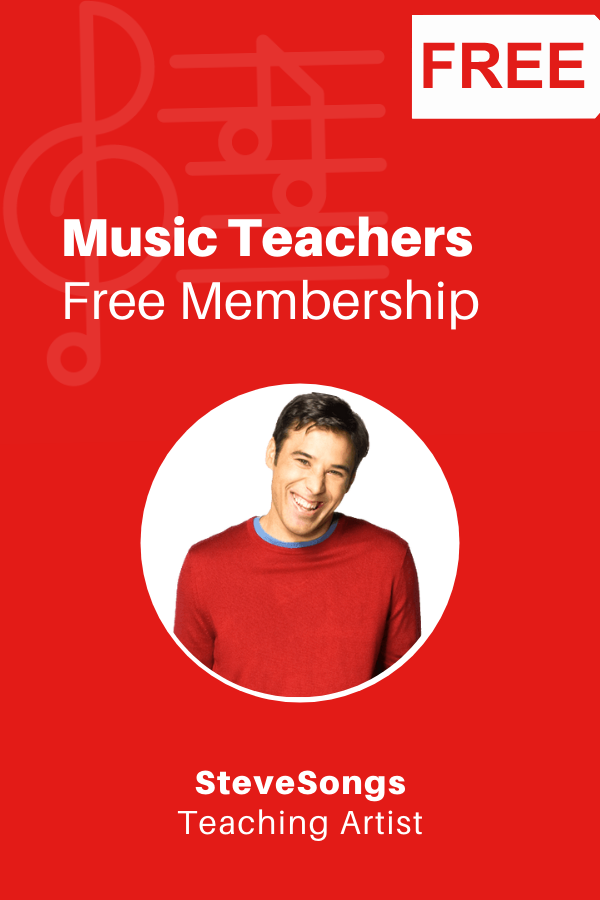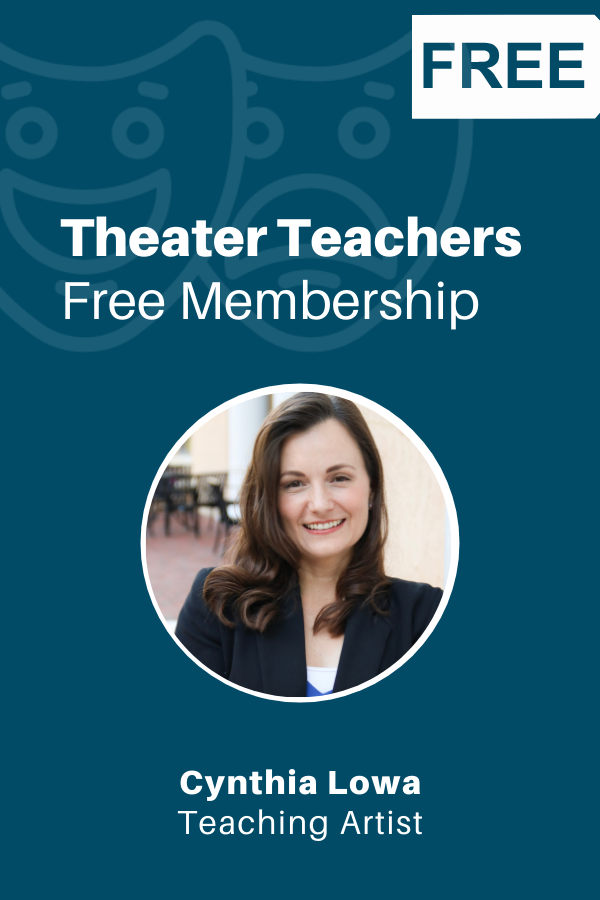Have your elementary music students ever asked you that tricky question, “Teacher, what is music beat?” If they have, and you’ve struggled to answer, you are not alone. Just breathe. This elementary music unit will help your elementary music students remember the definition of “beat” in music with a catchy song. It will also give them the opportunity to practice identifying the beat in three different songs. Check out the “what is music beat” song in the video below. Get these music activities kids will love through our free elementary music membership!
Free elementary music curriculum
This free elementary music curriculum unit is perfect for elementary music teachers or classroom teachers looking to integrate music activities kids will love. As a member of our community, you get lesson plans for elementary music, videos for elementary music class songs, and everything you need to make teaching music fun and easy! Join our free elementary music membership today!
Meet the teaching artist: Jairo Puello “JP”
Born in the Dominican Republic, Jairo Puello has been singing and songwriting since he was a kid. At ten years of age, Jairo learned that he could sell newspapers a lot faster if he sang the news. By fifteen he was the invited singer at summer church camps. At nineteen he released his first acapella quartet recording to help cover college expenses in Puerto Rico. At twenty-one, he released his first duo album with his sister Any Puello. Not long after, he released three more solo albums: Me Quedo Contigo, Atado a Ti, and Sobre la Roca. He also produced a bilingual children’s album called Jubilee.
Jairo has performed on tours in more than 20 countries, was nominated for Los Premios Cassandra (the equivalent to the Grammys in the Dominican Republic) with his Atado a Ti album. He has performed for a few people on a pew in a small country church and for more than ten thousand fans in a baseball stadium. Jairo is currently teaching Spanish at a charter school in South Carolina. He continues to sing on the worship team at church and assists in musical productions as time allows.
Meet the guest singers: Megan and Adriel Puello
There’s no doubt that both Megan and Adriel get their singing talent from their dad, but their mom plays piano and violin…so let’s just say music is something that runs in our family. Megan is currently a senior in high school, and Adriel is a junior in university. They are both very passionate about music. Both have sung on worship teams at church, sung in honors choir at school, and participated in Candlelight performances at Walt Disney World. In 2020, Adriel started songwriting for the first time. Adriel also plays piano, so he’s working on producing his own music. Megan is very slow to develop her vocal talent. She played Belle in middle school, has done background vocals for recording artists, and loves music. Megan just likes to do music her way on her timetable. And her parents understand…most of the time.
Elementary music teachers answer the “what is music beat” question very differently
Before I dive into more details about the unit we’ve created on beat, I feel like I need to write a full disclosure paragraph. I am a part of several Facebook groups for elementary teachers, and the other day a teacher asked for some help. She asked other elementary music teachers for advice on how to teach rhythm and beat to elementary students. Within a day, this teacher had eighty-four different answers to her question. Some of the answers shared a common thread, but many of them were very different. Other teachers approach the concept from a very theoretical and academic approach while others are far more practical. Then there are the teachers who like to explain and conceptualize while others believe that showing is always more powerful than telling.
So I realize that you may or may not like this unit. I also realize that you may or may not approach teaching the concept the way we do. But it’s all good. If you think our approach to teaching “beat” isn’t the greatest, don’t be a harsh critic. Just please leave a comment with constructive criticism and tell us how you would do it. We may edit/adapt the unit as a result. You can also join our elementary music membership to become a contributor. We create lesson plans and units just like this one with the help of our teacher community and get better with your feedback! So thanks ahead of time for collaborating!
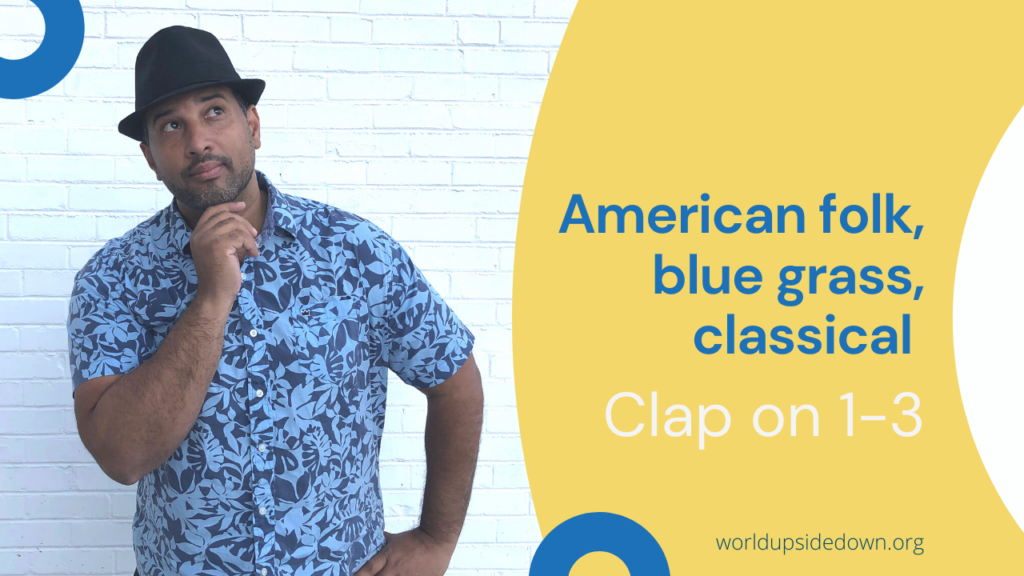
How we help you teach kids how to count the beat in music
Since we’re on the subject of how to teach music to kids, let me remind you of our curriculum creation process. At World Upside Down, we build our curriculum around three P’s: present, practice, and perform. So our teaching artists present the concept, students practice what they learned with the teacher (or video instructor), and then they perform what they have learned in front of their classmates. We’re using that same approach to help you teach your elementary music students the concept of beat. First, we teach them a song that helps them understand the definition and identify it when they see it. Next, we teach them how to feel the beat in three different songs. And yes. When we’re done with this unit, we’re creating another unit on rhythm. We’re hoping you find both units super helpful and that one builds upon the other.
How we define what is music beat
In our lesson, we define beat as the steady pulse in music. It’s not an original definition. It’s just the best one we could find that aligned with national and state standards. And the song I wrote doesn’t repeat the exact definition of beat in the lyrics but rather shows kids what the beat is and does. Both words and music are an original composition by Joanna Puello (yours truly). My husband Jairo Puello (of Music Break with JP) created the musical soundtrack on Garageband. When we have the budget to hire an arranger, musician, and sound engineer, we’ll make it even better. But I’m actually pretty pleased with what we could do with just Garageband, iPhone cameras, and Adobe Premiere.
Verse 1
Beat in music is pretty neat
It pounds and pounds just like a heartbeat.
We can clap it with our hands and stomp it with our feet.
Chorus
But it never, ever stops. It just beats, beats, beats.
Verse 2
Beat in music is pretty neat
It pounds and pounds just like a heartbeat.
We can make it go fast, we can make it go slow.
Chorus
///But it never, ever stops. It just beats, beats, beats.///
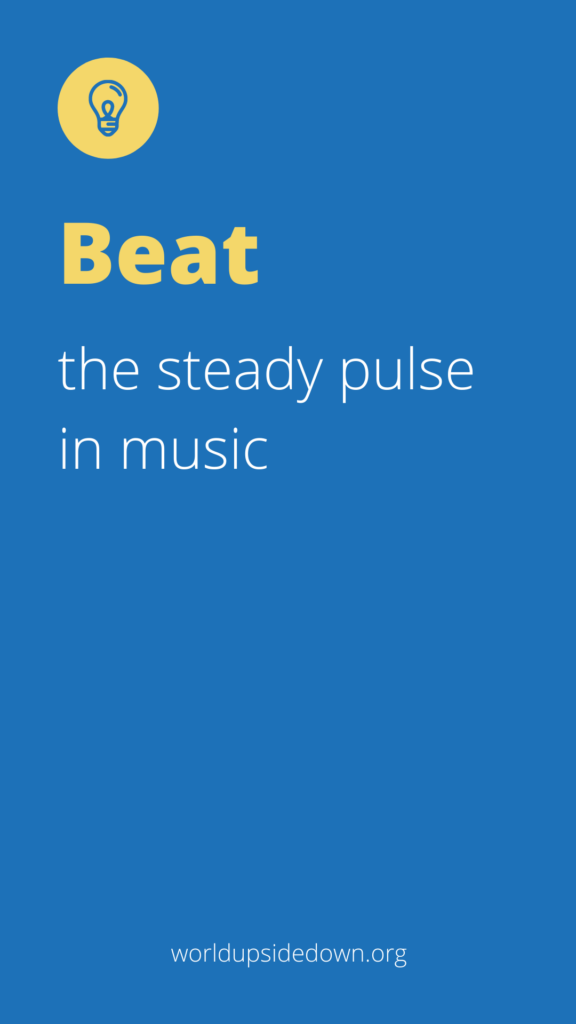
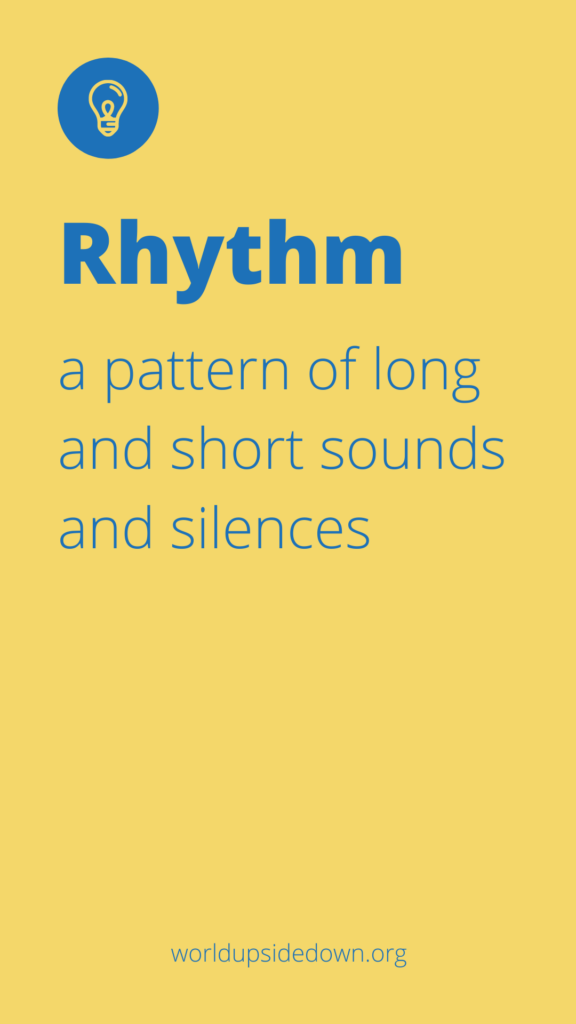
Teach your elementary students what is music beat for free
Elementary music teachers or classroom teachers looking to integrate music activities kids love can join our elementary music membership for free! As a member of our community, you get lesson plans for elementary music, videos for elementary music class songs, and everything you need to make teaching music fun and easy! Sign up today!
How JP teaches kids how to count the beat in music
Putting this lesson together was not easy. Some of the questions I had to ask myself were:
- Do we teach beat without teaching notes?
- How do we teach notes without teaching rhythm?
- Do we teach beat before we teach rhythm?
- How do we teach rhythm before we teach beat?
You may think that I’m overthinking it, but most Americans have sat through an elementary music class. Most Americans get one class of music once a week for all of their elementary years. Yet if they go to a jazz concert, they don’t know how to clap on beat. Maybe it’s just me, but I think there’s something wrong with that picture. What are we teaching them in music class? Maybe the better question is what are we not teaching them?
So after doing a lot of research, I decided to use this unit to orient kids on the concept of beat as a whole. We don’t go into all of the specific subcategories of beats or definitions.
[Actually, I’d love to get into that in a follow-up unit. But for now, I’ll refer you to Wikipedia because honestly after hours of research, I found their article https://en.wikipedia.org/wiki/Beat_(music) was the most helpful in terms of getting into the fine details of definitions.] Back to the topic…
My goal for this unit was two-fold. First, I want to orient kids towards the general concept of beat. I want them to be able to listen to a song and feel the steady pulse. Then, I want them to hear it. But I also want them to feel it, to groove to it so that they will know how to how to clap to it. Second, I want to teach the concept of beat in such a way that makes them completely ready to learn about rhythm.
Inspiration on how to teach “what is music beat”
One of the teaching artists that inspired me the most on the topic was Aimee Nolte and her video Clapping To The Beat: 1 & 3 vs. 2 & 4. The video is directed towards adults so would not be a good resource for the elementary music classroom. However, Aimee does a very informative chat on how to clap to the beat.
Unlike other musicians, she doesn’t pose a right or wrong approach. She shows how clapping on 1 and 3 is appropriate for some music genres or songs and inappropriate for others. Then she shows clips from popular artists like Johnny O’Neal, Justin Bieber and how they respond to fans clapping to the “wrong beat” during the performance. Aimee also discusses the classic Harry Connick stunt where he got his European audience to switch from clapping on 1 and 3 to clapping on 2 and 4 by adding another beat to the measure.
Throughout the video, Aimee not only addresses the topic with grace but also shows her musical expertise as she talks musicians (or non-musicians) through the musical concepts of beat and how important finding the groove is especially when attending a live performance. Aimee also addresses cultural aspects of music and approach towards beat in a very sensitive yet historically accurate way. Now Aimee is the kind of musician who should be invited to every elementary music classroom.
No matter how you feel about teaching the topic, I think you’ll enjoy her chat! Let me know what you think in the comments–always with grace and constructive dialogue, please.
Check out more about our Music Break with JP music units
Find out more about free contact you can access through our free elementary music membership!
Music activities for Hispanic Heritage Month




